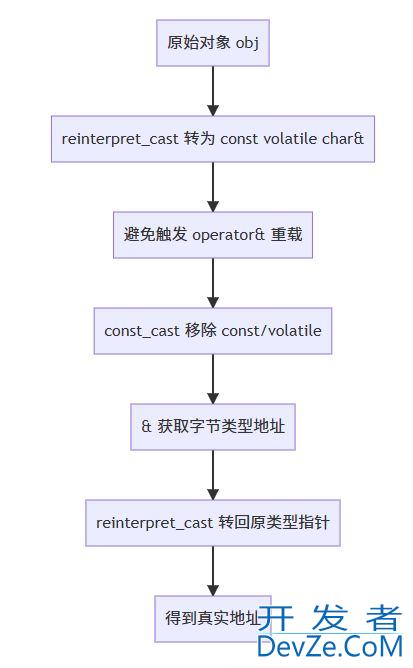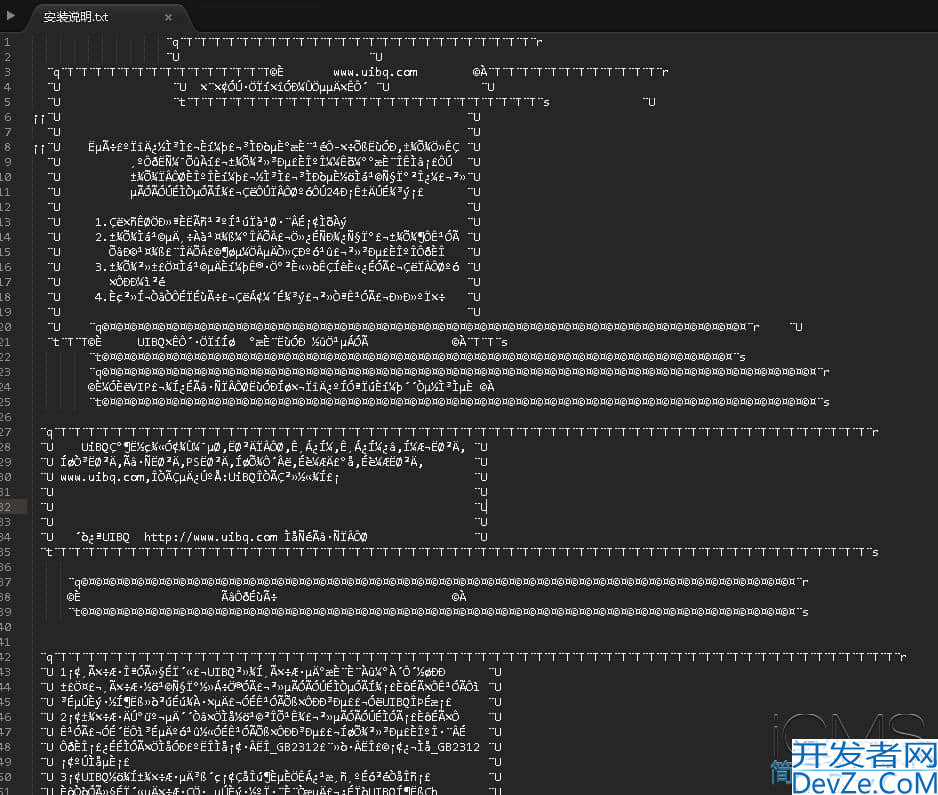Python实现自动化Word文档样式复制与内容生成
目录
- 一、为什么需要自动化 Word 文档处理
- 二、核心功能实现:样式与表格的深度复制
- 1. 表格复制(含样式与内容)
- 2. 文档整体样式复制与内容生成
- 三、完整流程演示
- 1. 依赖准备
- 2. 辅助函数实现
- 3. 主程序调用
- 四、实际应用场景
- 五、常见问题与优化建议
- 六、总结
在办公自动化领域,如何高效地处理 Word 文档的样式和内容复制是一个常见需求。本文将通过一个完整的代码示例,展示如何利用 python 的 python-docx 库实现 Word 文档样式的深度复制 和 动态内容生成,并结合知识库中的最佳实践优化文档处理流程。
一、为什么需要自动化 Word 文档处理
手动处理 Word 文档(如复制样式、插入表格/图片)不仅耗时且容易出错。Python 提供了多种库(如 python-docx、pywin32、Spire.Doc)来自动化这些任务。例如,python-docx 可以直接操作 .docx 文件的段落、表格和样式,而无需依赖 Microsoft Office 软件。
二、核心功能实现:样式与表格的深度复制
1. 表格复制(含样式与内容)
以下函数 clone_table 实现了表格的 结构、样式和内容 的完整复制:
def clone_table(old_table, new_doc):
"""根据旧表格创建新表格"""
# 创建新表格(行列数与原表一致)
new_table = new_doc.add_table(rows=len(old_table.rows), cols=len(old_table.columns))
# 复制表格样式(如边框、背景色)
if old_table.style:
new_table.style = old_table.style
# 遍历单元格内容与样式
for i, old_row in enumerate(old_table.rows):
for j, old_cell in enumerate(old_row.cells):
new_cell = new_table.cell(i, j)
# 清空新单元格默认段落
for paragraph in new_cell.paragraphs:
new_cell._element.remove(paragraph._element)
# 复制段落与样式
for old_paragraph in old_cell.paragraphs:
new_paragraph = new_cell.add_paragraph()
for old_run in old_paragraph.runs:
new_run = new_paragraph.add_run(old_run.text)
copy_paragraph_style(old_run, new_run) # 自定义样式复制函数
new_paragraph.alignment = old_paragraph.alignment
copy_cell_borders(old_cell, new_cell) # 复制单元格边框
# 复制列宽
for i, col in enumerate(old_table.columns):
if col.width is not None:
new_table.columns[i].width = col.width
return new_table
关键点解析:
表格样式保留:通过 new_table.style = old_table.style 直接继承原表格的样式。
单元格内容与格式分离处理:先清空新单元格的默认段落,再逐行复制文本和样式。
边框与列宽:通过 copy_cell_borders 和列宽设置确保视觉一致性。
2. 文档整体样式复制与内容生成
以下函数 clone_document 实现了从模板文档提取样式,并动态填充内容:
def clone_document(old_s, old_p, old_ws, new_doc_path):
new_doc = Document() # 创建新文档
# 动态填充内容
for para in old_p:
k, v = para["sn"], para["ct"] # 假设 old_p 包含样式名(sn)和内容(ct)
if "image" in v:
# 插入图片(需实现 copy_inline_shapes 函数)
copy_inline_shapes(new_doc, k, [i for i in old_s if v in i][0][v])
elif "table" == k:
# 插入表格(需实现 html_table_to_docx 函数)
html_table_to_docx(new_doc, v)
else:
# 段落处理
style = [i for i in old_s if i["style"]["sn"] == k]
style_ws = [i for i in old_ws if i["style"]["sn"] == k]
clone_paragraph(style[0], v, new_doc, style_ws[0]) # 克隆段落样式
new_doc.save(new_doc_path) # 保存新文档
数据结构说明:
old_s:模板文档的样式定义(如字体、段落对齐方式)。
old_p:内容数据(含样式标签与实际内容)。
old_ws:工作表上下文(如表格所在位置)。
三、完整流程演示
1. 依赖准备
首先安装 python-docx:
pip install python-docx
2. 辅助函数实现
以下函数需额外实现(代码未展示完整):
- copy_paragraph_style:复制段落样式(如字体、颜色)。
- copy_cell_borders:复制单元格边框样式。
- get_para_style:从模板文档提取样式。
- html_table_to_docx:将 HTML 表格转换为 Word 表格。
3. 主程序调用
if __name__ == "__main__":
# 从模板提取样式与工作表
body_ws, _ = get_para_style('demo_template.docx')
body_s, body_p = get_para_style("1.docx")
# 从 jsON 文件加载内容
with open("1.json", "r", encoding="utf-8") as f:
body_p = json.loads(f.read())
# 生成新文档
clone_document(body_s, body_p, body_ws, 'cloned_example.docx')
四、实际应用场景
1.报告自动生成
结合模板样式,动态填充数据库数据生成标准化报告。
2.批量文档处理
将多个 Excel 表格批量转换为 Word 文档(参考知识库中的 pywin32 与 python-docx 联合使用)。
3.博客内容迁移
将 Word 文档保存为 HTML 后,按知识库中的步骤导入 ZBlog 或 WordPress(见知识库 [2] 和 [5])。
五、常见问题与优化建议
1. 样式丢失问题
原因:Word 文档的样式可能依赖隐式继承。
解决方案:使用 python-docx 的 style 属性显式设置样式,或参考知识库 [7] 使用 Spire.Doc 进行更复杂的样式处理。
2. 图片与表格嵌入异常
原因:路径错误或资源未正确加载。
解决方案:确保图片路径绝对化,或使用 docx.shared.Inches 显式指定尺寸。
3. 性能优化
大文档处理:避免频繁调用 add_paragraph,改用批量操作。
内存管理:及时释放 Document 对象(如 doc = None)。
六、总结
通过本文的代码示例和解析,您已掌握如何使用 Python 实现 Word 文档的 样式深度复制 和 动态内容生成。结合知识库中的其他技术(如 ZBlog 导入、Office 自动化),可进一步扩展至完整的文档工作流自动化。
完整代码
from docx.enum.text import WD_BREAK
from docx import Document
from docx.enum.text import WD_ALIGN_PARAGRAPH
from docx.oXML import OxmlElement
from bs4 import BeautifulSoup
from docx.oxml.ns import qn
def docx_table_to_html(word_table):
soup = BeautifulSoup(features='html.parser')
html_table = soup.new_tag('table',)
# 记录哪些单元格已经被合并
merged_cells = [[False for _ in range(len(word_table.columns))] for _ in range(len(word_table.rows))]
for row_idx, row in enumerate(word_table.rows):
html_tr = soup.new_tag('tr')
col_idx = 0
while col_idx < len(row.cells):
cell = row.cells[col_idx]
# 如果该单元格已经被合并(被前面的 colspan 或 rowspan 占用),跳过
if merged_cells[row_idx][col_idx]:
col_idx += 1
continue
# 跳过纵向合并中被“continue”的单元格
v_merge = cell._element.tcPr and cell._element.tcPr.find(qn('w:vMerge'))
if v_merge is not None and v_merge.get(qn('w:val')) == 'continue':
col_idx += 1
continue
td = soup.new_tag('td')
# 设置文本内容
td.string = cell.text.strip()
# 初始化样式字符串
td_style = ''
# 获取单元格样式
if cell._element.tcPr:
tc_pr = cell._element.tcPr
# 处理背景颜色
shd = tc_pr.find(qn('w:shd'))
if shd is not None:
bg_color = shd.get(qn('w:fill'))
if bg_color:
td_style += f'background-color:#{bg_color};'
# 处理对齐方式
jc = tc_pr.find(qn('w:jc'))
if jc is not None:
align = jc.get(qn('w:val'))
if align == 'center':
td_style += 'text-align:center;'
elif align == 'right':
td_style += 'text-align:right;'
else:
td_style += 'text-align:lef编程客栈t;'
# 处理边框
borders = tc_pr.find(qn('w:tcBorders'))
if borders is not None:
for border_type in ['top', 'left', 'bottom', 'right']:
border = borders.find(qn(f'w:{border_type}'))
if border is not None:
color = border.get(qn('w:color'), '000000')
size = int(border.get(qn('w:sz'), '4')) # 半点单位,1pt = 2sz
style = border.get(qn('w:val'), 'single')
td_style += f'border-{border_type}:{size // 2}px {style} #{color};'
# 处理横向合并(colspan)
grid_span = tc_pr.find(qn('w:gridSpan'))
if grid_span is not None:
colspan = int(grid_span.get(qn('w:val'), '1'))
if colspan > 1:
td['colspan'] = colspan
# 标记后面被合并的单元格
for c in range(col_idx + 1, col_idx + colspan):
if c < len(row.cells):
merged_cells[row_idx][c] = True
# 处理纵向合并(rowspan)
v_merge = tc_pr.find(qn('w:vMerge'))
if v_merge is not None and v_merge.get(qn('w:val')) != 'continue':
rowspan = 1
next_row_idx = row_idx + 1
while next_row_idx < len(word_table.rows):
next_cell = word_table.rows[next_row_idx].cells[col_idx]
next_v_merge = next_cell._element.tcPr and next_cell._element.tcPr.find(qn('w:vMerge'))
if next_v_merge is not None and next_v_merge.get(qn('w:val')) == 'continue':
rowspan += 1
next_row_idx += 1
else:
break
if rowspan > 1:
td['rowspan'] = rowspan
# 标记后面被合并的行
for r in range(row_idx + 1, row_idx + rowspan):
if r < len(word_table.rows):
merged_cells[r][col_idx] = True
# 设置样式和默认边距
td['style'] = td_style + "padding: 5px;"
html_tr.append(td)
# 更新列索引
if 'colspan' in td.attrs:
col_idx += int(td['colspan'])
else:
col_idx += 1
html_table.append(html_tr)
soup.append(html_table)
return str(soup)
def set_cell_background(cell, color_hex):
"""设置单元格背景色"""
color_hex = color_hex.lstrip('#')
shading_elm = OxmlElement('w:shd')
shading_elm.set(qn('w:fill'), color_hex)
cell._tc.get_or_add_tcPr().append(shading_elm)
def html_table_to_docx(doc, html_content):
"""
将 HTML 中的表格转换为 Word 文档中的表格
:param html_content: HTML 字符串
:param doc: python-docx Document 实例
"""
soup = BeautifulSoup(html_content, 'html.parser')
tables = soup.find_all('table')
for html_table in tables:
# 获取表格行数
trs = html_table.find_all('tr')
rows = len(trs)
# 估算最大列数(考虑 colspan)
cols = 0
for tr in trs:
col_count = 0
for cell in tr.find_all(['td', 'th']):
col_count += int(cell.get('colspan', 1))
cols = max(cols, col_count)
# 创建 Word 表格
table = doc.add_table(rows=rows, cols=cols)
table.style = 'Table Grid'
# 记录已处理的单元格(用于处理合并)
used_cells = [[False for _ in range(cols)] for _ in range(rows)]
for row_idx, tr in enumerate(trs):
cells = tr.find_all(['td', 'th'])
col_idx = 0
for cell in cells:
while col_idx <编程客栈; cols and used_cells[row_idx][col_idx]:
col_idx += 1
if col_idx >= cols:
break # 避免越界
# 获取 colspan 和 rowspan
colspan = int(cell.get('colspan', 1))
rowspan = int(cell.get('rowspan', 1))
# 获取文本内容
text = cell.get_text(strip=True)
# 获取对齐方式
align = cell.get('align')
align_map = {
'left': WD_ALIGN_PARAGRAPH.LEFT,
'center': WD_ALIGN_PARAGRAPH.CENTER,
'right': WD_ALIGN_PARAGRAPH.RIGHT
}
# 获取背景颜色
style = cell.get('style', '')
bg_color = None
for s in style.split(';'):
if 'background-color' in s or 'background' in s:
bg_color = s.split(':')[1].strip()
break
# 获取 Word 单元格
word_cell = table.cell(row_idx, col_idx)
# 合并单元格
if colspan > 1 or rowspan > 1:
end_row = min(row_idx + rowspan - 1, rows - 1)
end_col = min(col_idx + colspan - 1, cols - 1)
merged_cell = table.cell(row_idx, col_idx).merge(table.cell(end_row, end_col))
word_cell = merged_cell
# 设置文本内容
para = word_cell.paragraphs[0]
para.text = text
# 设置对齐方式
if align in align_map:
para.alignment = align_map[align]
# 设置背景颜色
if bg_color:
try:
set_cell_background(word_cell, bg_color)
except:
pass # 忽略无效颜色格式
# 标记已使用的单元格
for r in range(row_idx, min(row_idx + rowspan, rows)):
for c in range(col_idx, min(col_idx + colspan, cols)):
used_cells[r][c] = True
# 移动到下一个可用列
col_idx += colspan
# 添加空段落分隔
doc.add_paragraph()
return doc
def copy_inline_shapes(old_paragraph):
"""复制段落中的所有内嵌形状(通常是图片)"""
images = []
for shape in old_paragraph._element.xpath('.//w:drawing'):
blip = shape.find('.//a:blip', namespaces={'a': 'http://schemas.openxmlformats.org/drawingml/2006/main'})
if blip is not None:
rId = blip.attrib['{http://schemas.openxmlformats.org/officeDocument/2006/relationships}embed']
image_part = old_paragraph.part.related_parts[rId]
image_bytes = image_part.image.blob
image_name=image_part.filename+";"+image_part.partname
images.append([image_bytes,image_name, image_part.image.width, image_part.image.height])
return images
def is_page_break(element):
"""判断元素是否为分页符(段落或表格后)"""
if element.tag.endswith('p'):
for child in element:
if child.tag.endswith('br') and child.get(qn('type')) == 'page':
return True
elif element.tag.endswith('tbl'):
# 表格后可能有分页符(通过下一个元素判断)
if element.getnext() is not None:
next_element = element.getnext()
if next_element.tag.endswith('p'):
for child in next_element:
if child.tag.endswith('br') and child.get(qn('type')) == 'page':
return True
return False
def clone_paragraph(old_para):
"""根据旧段落创建新段落"""
style = {"run_style": []}
if old_para.style:
# 这里保存style 主要通过字体识别 是 几级标题
style_name_to_style_obj = {"sn":old_para.style.name + "_" + str(old_para.alignment).split()[0], "ct": old_para.style}
style["style"] = style_name_to_style_obj
paras = []
for old_run in old_para.runs:
text_to_style_name = {"ct":old_run.text, "sn":old_para.style.name + "_" + str(old_para.alignment).split()[0]}
style["run_style"].append(old_run)
paras.append(text_to_style_name)
style_name_to_alignment = {"sn":old_para.style.name + "_" + str(old_para.alignment).split()[0],"ct":old_para.alignment}
style["alignment"] = style_name_to_alignment
images = copy_inline_shapes(old_para)
if len(images):
for image_bytes,image_name, image_width, image_height in images:
style[image_name.split(";")[-1]] = images
paras.append({"sn":image_name.split(";")[0],"ct":image_name.split(";")[-1]})
return style, paras
def clone_document(old_doc_path):
try:
old_doc = Document(old_doc_path)
new_doc = Document()
# 复制主体内容
elements = old_doc.element.body
para_index = 0
table_index = 0
index = 0
body_style = []
body_paras = []
while index < len(elements):
element = elements[index]
if element.tag.endswith('p'):
old_para = old_doc.paragraphs[para_index]
style, paras = clone_paragraph(old_para)
body_style.append(style)
body_paras += paras
para_index += 1
index += 1
elif element.tag.endswith('tbl'):
old_table = old_doc.tables[table_index]
body_paras += [{"sn":"table","ct":docx_table_to_html(old_table)}]
table_index += 1
index += 1
elif element.tag.endswith('br') and element.get(qn('type')) == 'page':
if index > 0:
body_paras.append("br")
new_doc.add_paragraph().add_run().add_break(WD_BREAK.PAGE)
index += 1
else:
index += 1
# 检查分页符
if index < len(elements) and is_page_break(elements[index]):
if index > 0:
new_doc.add_paragraph().add_run().add_break(WD_BREAK.PAGE)
body_paras.append("br")
index += 1
else:
return body_style, body_paras
except Exception as e:
print(f"复制文档时发生错误:{e}")
# 使用示例
if __name__ == "__main__":
# 示例HTML表格
body_s, body_p = clone_document('1.docx')
print()
import json
from docx import Document
from docx.oxml import OxmlElement
from docx.oxml.shared import qn
from wan_neng_copy_word import clone_document as get_para_style,html_table_to_docx
import io
# 剩余部分保持不变...
def copy_inline_shapes(new_doc,image_name, img):
"""复制段落中的所有内嵌形状(通常是图片)"""
new_para = new_doc.add_paragraph()
for image_bytes_src,_, w, h in img:
try:
with open(image_name, 'rb') as f:
image_bytes = f.read()
except:
image_bytes = image_bytes_src
# 添加图片到新段落
new_para.add_run().add_picture(io.BytesIO(image_bytes), width=w, height=h) # 设置宽度为1.25英寸或其他合适的值
def copy_paragraph_style(run_from, run_to):
"""复制 run 的样式"""
run_to.bold = run_from.bold
run_to.italic = run_from.italic
run_to.underline = run_from.underline
run_to.font.size = run_from.font.size
run_to.font.color.rgb = run_from.font.color.rgb
run_to.font.name = run_from.font.name
run_to.font.all_caps = run_from.font.all_caps
run_to.font.strike = run_from.font.strike
run_to.font.shadow = run_from.font.shadow
def is_page_break(element):
"""判断元素是否为分页符(段落或表格后)"""
if element.tag.endswith('p'):
for child in element:
if child.tag.endswith('br') and child.get(qn('type')) == 'page':
return True
elif element.tag.endswith('tbl'):
# 表格后可能有分页符(通过下一个元素判断)
if element.getnext() is not None:
next_element = element.getnext()
if next_element.tag.endswith('p'):
for child in next_element:
if child.tag.endswith('br') and child.get(qn('type')) == 'page':
return True
return False
def clone_paragraph(para_style, text, new_doc, para_style_ws):
"""根据旧段落创建新段落"""
new_para = new_doc.add_paragraph()
para_style_ws = para_style_ws["style"]["ct"]
para_style_data = para_style["style"]["ct"]
para_style_ws.font.size = para_style_data.font.size
new_para.style = para_style_ws
new_run = new_para.add_run(text)
copy_paragraph_style(para_style["run_style"][0], new_run)
new_para.alignment = para_style["alignment"]["ct"]
return new_para
def copy_cell_borders(old_cell, new_cell):
"""复制单元格的边框样式"""
old_tc = old_cell._tc
new_tc = new_cell._tc
old_borders = old_tc.xpath('.//w:tcBorders')
if old_borders:
old_border = old_borders[0]
new_border = OxmlElement('w:tcBorders')
border_types = ['top', 'left', 'bottom', 'right', 'insideH', 'insideV']
for border_type in border_types:
old_element = old_border.find(f'.//w:{border_type}', namespaces={
'w': 'http://schemas.openxmlformats.org/wordprocessingml/2006/main'
})
if old_element is not None:
new_element = OxmlElement(f'w:{border_type}')
for attr, value in old_element.attrib.items():
new_element.set(attr, value)
new_border.append(new_element)
tc_pr = new_tc.get_or_add_tcPr()
tc_pr.append(new_border)
def clone_table(old_table, new_doc):
"""根据旧表格创建新表格"""
new_table = new_doc.add_table(rows=len(old_table.rows), cols=len(old_table.columns))
if old_table.style:
new_table.style = old_table.style
for i, old_row in enumerate(old_table.rows):
for j, old_cell in enumerate(old_row.cells):
new_cell = new_table.cell(i, j)
for paragraph in new_cell.paragraphs:
new_cell._element.remove(paragraph._element)
for old_paragraph in old_cell.paragraphs:
new_paragraph = new_cell.add_paragraph()
for old_run in old_paragraph.runs:
new_run = new_pa编程客栈ragraph.add_run(old_run.text)
copy_paragraph_style(old_run, new_run)
new_paragraph.alignment = old_paragraph.alignment
copy_cell_borders(old_cell, new_cell)
for i, col in enumerate(old_table.columns):
www.devze.com if col.width is not None:
new_table.columns[i].width = col.width
return new_table
def clone_document(old_s, old_p, old_ws, new_doc_path):
new_doc = Document()
# 复制主体内容
for para in old_p:
k, v =para["sn"],para["ct"]
if "image" in v:
copy_inline_shapes(new_doc,k, [i for i in old_s if v in i ][0][v])
elif "table" == k:
html_table_to_docx(new_doc,v)
else:
style = [i for i in old_s if i["style"]["sn"]==k ]
style_ws = [i for i in old_ws if i["style"]["sn"]==k ]
clone_paragraph(style[0], v, new_doc, style_ws[0])
new_doc.save(new_doc_path)
# 使用示例
if __name__ == "__main__":
body_ws, _ = get_para_style('demo_template.docx')
body_s, body_p = get_para_style("1.docx")
# 将body_p 或者是压缩后的内容 给llm 如果希望llm 只是参考模版样式,可以压缩如果需要内容或者修改不可压缩
# 而后得到json 1.json 进行word生成
with open("1.json", "r", encoding="utf-8") as f:
body_p=json.loads(f.read())
print("获取样式完成",body_p)
clone_document(body_s, body_p, body_ws, 'cloned_example.docx')
from docx import Document
from docx.enum.text import WD_ALIGN_PARAGRAPH
# 创建一个新的Word文档
doc = Document()
for align in [WD_ALIGN_PARAGRAPH.LEFT, WD_ALIGN_PARAGRAPH.RIGHT, WD_ALIGN_PARAGRAPH.CENTER, None]:
for blod_flag in [True, False]:
# 获取所有可用的段落样式名(只保留段落样式)
paragraph_styles = [
style for style in doc.styles if style.type == 1 # type == 1 表示段落样式
]
# 输出样式数量
print(f"共找到 {len(paragraph_styles)} 种段落样式:")
for style in paragraph_styles:
print(f"- {st编程客栈yle.name}")
# 在文档中添加每个样式对应的段落
for style in paragraph_styles:
heading = doc.add_paragraph()
run = heading.add_run(f"样式名称: {style.name}")
run.bold = blod_flag
para = doc.add_paragraph(f"这是一个应用了 '{style.name}' 样式的段落示例。", style=style)
para.alignment = align
# 添加分隔线(可选)
doc.add_paragraph("-" * 40)
# 保存为 demo_template.docx
doc.save("demo_template.docx")
print("\n✅ 已生成包含所有段落样式的模板文件:demo_template.docx")
到此这篇关于Python实现自动化Word文档样式复制与内容生成的文章就介绍到这了,更多相关Python Word样式复制与内容生成内容请搜索编程客栈(www.devze.com)以前的文章或继续浏览下面的相关文章希望大家以后多多支持编程客栈(www.devze.com)!






 加载中,请稍侯......
加载中,请稍侯......
精彩评论